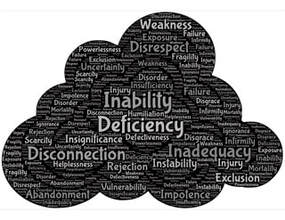|
New research shows increasing your intake of fresh fruits and vegetables can boost your well-being in as little as two weeks. Although the study didn’t explain why, previous studies show eating more vegetables impacts brain, immune, and gut health — all of which affect your mood.
The New Zealand study divided more than 170 young adults into three groups. The researchers personally gave one group two servings on fresh fruits and vegetables each day. The second group was given vouchers and text reminders to consume extra produce. The third group was not given any produce or vouchers. The first group given the extra produce in person consumed an average of 3.7 servings a day of fruits and vegetables. After two weeks they reported feeling improvements in mood, vitality, motivation, as well as a flourishing of well-being. The other two groups reported no change. 5 Ways Eating More Produce Makes You Feel Better When you look at the effects of a plant-based diet on health, the results of this study are no surprise. Here are five reasons why eating more fruits and vegetables can make you happier and more motivated: Eating more vegetables increases the gut bacteria that promotes relaxation. Brain scans show healthy gut bacteria promotes relaxation. Eating more vegetables increases the gut bacteria that lower brain inflammation. A Harvard-affiliated study found that healthy gut bacteria lowers brain inflammation, thus lowering the risk of dementia. Brain inflammation is also linked with depression, anxiety, and irritability. Eating more vegetables increases the gut bacteria that lower depression, anxiety, eating disorders, autism symptoms, and obesity. By now you get the picture. Studies continue to find links between gut bacteria and a variety of mood and mental disorders. Eating a wide variety of plenty of produce is the best way to create a healthy diversity of gut bacteria. Regular bowel movements from increased fiber of a high-vegetable diet improve your mood. It’s no mystery why constipated babies are so fussy. Research shows a higher prevalence of mood disorders in those with chronic constipation. Although myriad factors can cause constipation, often it’s as simple as too little plant fiber. Eating ample amounts of vegetables and fruits promotes regular, healthy bowel movements (unless you have a gut disorder that makes digesting produce difficult). Constipation increases circulating toxins in the body, which can inflame the brain and leads to bad moods. What Does a Serving of Vegetables Look Like? The new recommendation from the American Institute for Cancer Research is to eat at least five servings a day of fruits and vegetables, but ideally you should eat seven to ten. Five of those servings should be vegetables and two to three fruit (to avoid consuming too much sugar). In other words, two-thirds of each meal should be vegetables. A “serving” is a vague reference. Here are some ideas of what a serving looks like:
Most Americans don’t eat near enough vegetables. It takes some practice and discipline to develop a vegetable habit (vegetable for breakfast, anyone?), but once you do you’ll be motivated by how much better you feel. Pre-prep veggies for quick salads, and make big batches of veggie soups and stews to facilitate the transition.
0 Comments
 The cerebellum (the area at the back of the brain) is best known for its role in balance and coordination. However, the cerebellum does more than that — when it starts to malfunction, the results can be not only worsened balance, but also anxiety, insomnia, and hyper sensitivity. The cerebellum is a primary integrator of information for the brain. Our body has hundreds of thousands of receptors that detect motion, vision, and where and how our body and joints are positioned at all times. These receptors constantly relay information to the brain so that we can move and function properly in our environment. This information requires organizing before heading to the rest of the brain. The cerebellum condenses the information and “gates” it, meaning it releases it in manageable amounts to the brain’s cortex, the outer covering with its characteristic folds. The cortex, which is responsible for higher-order functions of thought and action, decides if you need to carry out a specific action or thought in response to the information, such as turn left, answer a question, run from danger, make a decision, etc. The cortex then sends its information back to the cerebellum to help carry out actions. When Things Go Wrong With The Cerebellum The cerebellum is a common site of dysfunction. It can degenerate, meaning neurons die. The cerebellum is very susceptible to sensitivity to gluten and other foods, environmental toxins, and oxidative stress. It also can degenerate with age — why older people notoriously have bad balance. Children born with brain developmental disorders often have poor cerebellar function. Poor cerebellar function is observed in various ways, such as poor balance, lack of coordination, or a tremor as you go to pick something up or bring a glass to your mouth (known as termination tremors). Stand with your feet together, your arms at your side, and then close your eyes. If you sway more frequently to one side, that may indicate the side with more cerebellar dysfunction — it takes it longer to respond to falling on that side of your body. Other tests your doctor may use to observe cerebellum function are coordination tests such as: finger to nose, walking heel to toe in a straight line, performing complex alternating movements, and ocular tracking (the eyes give insight into function). Poor cerebellar function can also cause dizziness, disorientation, and nausea in cars, on boats, or when seeing things move swiftly, such as in a movie. Basically, the cerebellum is not able to respond appropriately to input from the environment. Cerebellum Function and Anxiety & Insomnia As the cerebellum loses function it begins to falter at its job of gating information delivered to the cortex. As a result, excess information slips through. This means the cortex and areas in the brainstem receive more information than they can adequately manage. Much of the role of the frontal cortex is to act as a brake pedal on the brainstem, preventing the brainstem from spinning out of control. Our brainstem governs myriad functions, such as emotions, heart function, blood pressure, and digestion. This poorly gated sensory overload can cause many symptoms: Anxiety Sensitivity to light and sound Startle easily Insomnia due to racing mind Irritable Trouble staying asleep Highly emotionally sensitive Fearful Heart racing/palpitations Blood Pressure changes Digestive Issues Many factors work against us when it comes to healthy brain function that prevents an overactive brain and anxiety. They include a culture that cherishes overworking, inflammatory diets, unstable blood sugar, too much screen time, stressful lives, and not enough sleep. Ask my office for information on how to dampen brain activity and help relieve anxiety and insomnia.  Many different factors can cause anxiety. One little-known cause is a genetic variation that prevents your brain from making enough GABA, a calming brain chemical that prevents anxiety. You can do a simple test with a supplement to find out if this genetic variation affects you. GABA: The Brain Chemicals That Prevents Anxiety When GABA is low, anxiety goes up, it’s difficult to sleep, and you always feel like you’re in a hurry or living under the threat of imminent doom. GABA is made from another brain chemical called glutamate. Glutamate is the opposite of GABA in that it is excitatory and stimulating to the nervous system. Both are necessary for healthy brain function. Ideally, they operate in concert with one another, keeping the brain both sufficiently stimulated and calmed as necessary. However, many disorders today, including anxiety, involved excess glutamate and insufficient GABA. Excess glutamate not only over stimulates the nervous system, it is also toxic to the brain and can age, or degenerate, it too quickly. The Alpha-ketoglutaric Acid Challenge to Screen for Genetic Cause of Anxiety A variety of factors can cause excess glutamate, however, for some it is faulty conversion of glutamate to GABA that is genetic. Consider this possibility if you have a family history of anxiety. You can test whether you have this genetic conversion variation with a supplement called alpha-ketoglutaric acid (AKG). The body makes AKG into glutamate, some of which will be made into GABA, unless you have this genetic issue. How To Do The AKG Challenge To perform the challenge, take 3,000 to 4,000 mg of alpha-ketoglutaric acid. Some people have a response after taking it once; others have to take it for several days to respond. Use trial and error to test it. If you do not have this genetic conversion issue, the AKG will cause either no symptoms or perhaps a little extra energy from the increased glutamate production, but not anxiety. For the person with the genetic variation, however, the surge of glutamate production combined with the genetic inability to convert it to GABA will cause excitability, nervousness, anxiety, insomnia, and other GABA-deficiency symptoms. If You Have a Positive Result with the AKG Challenge If the AKG gave you anxiety or insomnia, then you know a perpetual GABA shortage may be an issue for you. Taking GABA support on a regular, lifelong basis may help alleviate symptoms of anxiety, insomnia, nervousness, and catastrophic thinking. Compounds that work well to support GABA pathways include l-theanine, l-taurine, vitamin B6, valerian, passion flower, and lithium orotate. These can be taken regularly. Be careful with drugs that increase GABA, such as benzodiazepenes (Valium, Xanax, etc.) They cause many people to build a tolerance to them and withdrawal can be extremely difficult. Some supplements such as phenibut act like benzodiazepenes and can also cause tolerance if taken regularly, so be mindful of those. Straight GABA is too large to cross the blood-brain barrier, so if it works, then this may indicate you have a leaky blood-brain barrier, which is commonly associated with leaky gut. Also, taking straight GABA regularly can cause you to build a tolerance as well. Regular exercise, stress-reducing techniques, blocking blue light at night avoiding foods or supplements that raise glutamate (such as MSG or artificial sweeteners), stabilizing blood sugar, and avoiding foods that cause an immune reaction are some other ways to manage your anxiety naturally. The placebo effect is a target of ridicule but studies show it has become increasingly effective in recent years, particularly in the United States, where drugs for pain, depression, anxiety sometimes barely outmatch placebos.
Fortunately, researchers have decided to study how and why the placebo effect works. By embracing the mystery of the placebo effect, you can harness its powers to enhance your health protocol or better cope with your ailment. What is the Placebo Effect? Researchers give one group of subjects a new drug or procedure and a different group a sham, then compare the results. Neither group knows which treatment they received. In some studies, the placebo treatment works as well or even better than the real treatment. 1: Use Belief to Enhance Placebo Effect A person’s beliefs and expectations play a profound role in how their body will respond to something. When subjects are told their pain will drop before receiving a placebo, it does. Likewise, when they are told they will experience more pain, they do, even though pain delivery was not increased. Scans during these experiments show brain activity corresponds with the expected outcome, even though neither pain relief nor increased pain was delivered. Scientists have also learned that positive expectations release endorphins and dopamine, the “reward” brain chemical. Endorphins dampen inflammation and both endorphins and dopamine help relieve pain. Spend some time every day reaffirming why you’re on your health journey and the positive things you expect to gain from it. Visualize feeling and functioning better. 2: Receive Care and Attention to Enhance Placebo Increased attention, concern, and care are also believed to be why the placebo effect has become much stronger in recent years. When people take part in these studies, they receive an increased level of interaction and care that positively impacts their health. Seek out supportive care and nurturing during your health journey. This can be from a practitioner you work with, through body work appointments, or in the company of a support group or class. Include plenty of in-person social time as it is better for you than online socializing. 3: Develop a Positivity and Gratitude Practice Negativity is stressful and inflammatory. Doctors report that patients who are angry, don’t believe their treatment will work, or who are not supported by their friends and family in their healing journey may not experience optimal results. However, the person who expects the best from their protocol, learns about their new diet and supplements, and enjoys working with their practitioner experiences less stress and inflammation and better results. Take some time each day to think positive thoughts about your health journey and what it involves. Keep a daily or weekly gratitude journal and make sure to note your progress. These tips really do help your health! Remember, it’s the placebo effect and not superstitionAlthough we’ve all heard miracle healing stories, it’s best not to pin your hopes on one. The placebo effect alone is estimated to work between 18 to 80 percent of the time, which is a wide spread to bank on. Functional medicine is about creating new lifelong habits as much as it is about restoring function. By injecting the best the placebo effect has to offer into your daily diet and protocol, you are laying the groundwork for a lifetime of more positive outcomes. What Is Leaky Gut and Why Should You Care? Does stuff really leak out of your intestines when you have leaky gut? The truth is, contents of the small intestine escape through the wall into the bloodstream. This can trigger many different inflammatory disorders and autoimmune disease, a disease in which the immune system attacks and destroys body tissue. Leaky gut is associated with symptoms including:
Leaky Gut Now on the Research Radar Conventional medicine once believed leaky gut wasn’t a valid concept, but researchers now validate it as linked with many chronic disorders, including inflammatory bowel disorders, gluten sensitivity and celiac disease, Crohn’s disease, type 1 diabetes, depression, and more. How to Repair Leaky Gut If you have a chronic health condition — even if it’s not digestive — addressing leaky gut is vital to improving your health. The bulk of this work is done through diet. The most common causes of leaky gut are processed foods, excess sugars, lack of plant fibers, and foods that trigger an immune reaction (as in gluten sensitivity). Excess alcohol, NSAID use, and antibiotics are other common culprits. A leaky gut diet, also known as an autoimmune diet, helps many people repair leaky gut. Stabilizing blood sugar is also key. If you have Hashimoto’s hypothyroidism you are not managing correctly, or if your liver is not detoxifying properly, you will likely have problems with leaky gut. Nutrients that can help support liver detoxification include milk thistle, dandelion root, and schizandra. In addition to diet, many nutrients can help support gut healing. Some of these include probiotics, enzymes, l-glutamine, deglycyrrhizinated licorice root, collagen, hydrochloric acid, and anti-fungal herbs. Targeted nutrients can help stabilize blood sugar, manage stress, tame inflammation, and support a healthy balance of gut bacteria. All these factors help repair leaky gut. If you have an autoimmune condition, managing leaky gut can be a lifelong process as autoimmune flares can inflame the gut. Ask me for advice about a leaky gut diet and protocol. |
|





 RSS Feed
RSS Feed